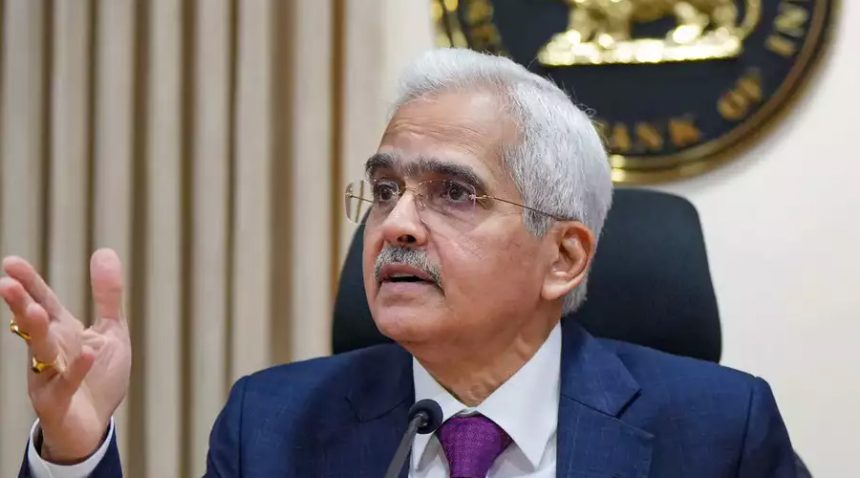As the Fed holds steady, all eyes are on the RBI. What comes next for interest rates, the rupee, and Indian markets
The United States Federal Reserve has held its benchmark interest rate steady between 4.25% and 4.50% in its latest policy meeting. This pause in rate cuts signals increased caution about inflation and economic growth in the world’s largest economy. The ripple effects of this decision stretch far beyond the U.S., with emerging markets like India facing a complex set of macroeconomic challenges and opportunities. As global investors digest the Fed’s move, attention now shifts to the Reserve Bank of India (RBI) and its next steps in monetary policy.
The Fed’s Current Stance and Global Implications
The Federal Open Market Committee (FOMC) chose to hold rates due to sticky core inflation and a downward revision of U.S. GDP forecasts for 2025 to 1.7%. By signaling patience, the Fed seeks to avoid reigniting inflation, especially after earlier rate hikes began cooling the economy.
For India, the Fed’s decision means the global cost of capital remains high. Investors compare yields across markets to decide portfolio allocations. As long as U.S. rates stay elevated, funds tend to flow back to U.S. treasuries, creating pressure on emerging markets to maintain attractive interest rate differentials.
Foreign Capital Flows: Cautious Optimism for India
India has long attracted Foreign Portfolio Investments (FPIs) due to its strong growth story and reform-oriented outlook. However, capital flows tend to become volatile when the U.S. alters its interest rate direction. A Fed pause reduces the urgency of capital outflow from India but doesn’t guarantee inflows unless India’s macroeconomic fundamentals remain robust.
The Indian equity markets recently saw gains as expectations of a future Fed rate cut increased. Market benchmarks like the NSE Nifty 50 and BSE Sensex climbed, driven primarily by information technology and banking stocks. These sectors tend to perform well during periods of stable global interest rates.
At the same time, bond markets experienced a drop in yields, signaling investor confidence in India’s debt market. State bond auctions attracted strong demand, aided by the RBI’s surprise announcement of government debt purchases, a signal of liquidity support.
Currency Dynamics: The Rupee’s Delicate Balance
The Indian rupee showed resilience following the Fed’s announcement, appreciating over 1% to reach its strongest weekly performance in nearly two years. Increased dollar inflows through foreign banks and the unwinding of short positions supported the currency. However, the rupee remains vulnerable if U.S. yields spike again or global risk sentiment turns negative.
The exchange rate plays a crucial role in India’s trade balance. A stronger rupee makes imports cheaper, helping control inflation, but reduces export competitiveness. A weaker rupee, on the other hand, supports exporters but risks higher import costs, especially for energy and capital goods.
The RBI frequently intervenes in the currency markets to avoid excessive volatility. With foreign exchange reserves near all-time highs, the central bank retains room to manage short-term shocks while gradually rebuilding reserves after past drawdowns.
Inflation and Domestic Growth Outlook
India’s retail inflation (CPI) has remained within the RBI’s tolerance band of 2%-6% in recent months. However, food prices continue to be volatile, especially due to climatic disruptions and supply-side constraints. Meanwhile, core inflation, which excludes food and fuel, has shown signs of moderation.
On the growth front, India’s GDP expanded by 8.4% in the October-December quarter, one of the highest among major economies. Manufacturing, services, and construction sectors have shown resilience, supported by robust domestic demand and government-led capital expenditure.
However, the outlook remains sensitive to global developments, including geopolitical tensions, oil prices, and export demand. A high interest rate environment globally could delay private investment cycles, especially in capital-intensive industries.
RBI’s Policy Options and Strategic Considerations
In this backdrop, the RBI faces a delicate balancing act. With inflation broadly under control and growth showing strength, the central bank may prefer to maintain a status quo on rates in its upcoming policy review. The focus likely shifts to maintaining financial stability, ensuring liquidity, and supporting sustainable growth.
1. Policy Rate Management
The repo rate currently stands at 6.5%, unchanged since February 2023. A premature rate cut could fuel inflation, while a rate hike may dampen growth. The RBI may wait for stronger signals from the Fed regarding future rate cuts before adjusting its own stance. Maintaining an adequate rate differential with the U.S. remains essential to keep capital flows favorable and the rupee stable.
2. Liquidity Support Measures
The RBI has shown a willingness to support bond markets through open market operations and targeted liquidity injections. In the face of tight global conditions, liquidity tools such as long-term repo operations (LTROs) and government securities acquisitions can keep the domestic credit system well-oiled without altering policy rates.
3. Foreign Exchange Market Interventions
To defend the rupee against undue volatility, the RBI can step in through spot and forward market interventions. Stable exchange rates foster investor confidence and reduce imported inflation. With forex reserves above $630 billion, the RBI has the firepower to manage large-scale interventions if needed.
4. Macroprudential Tools and Financial Sector Monitoring
The central bank could also use macroprudential tools like modifying risk weights and exposure limits for banks to ensure credit remains directed toward productive sectors. Monitoring the health of Non-Banking Financial Companies (NBFCs), Microfinance Institutions (MFIs), and cooperative banks remains crucial in a high-rate environment.
Global Spillovers and Trade Considerations
A delayed U.S. rate cut cycle may slow global trade recovery. India’s merchandise exports, particularly in sectors like textiles, chemicals, and engineering goods, are sensitive to global demand. Services exports, especially in IT and digital sectors, continue to perform well, supported by digital transformation trends worldwide.
Remittances from the Indian diaspora remain strong, supported by higher interest rates in countries like the U.S. and the Gulf. However, a prolonged high-rate cycle in advanced economies could slow overseas job creation and discretionary spending, affecting inbound remittances in the medium term.
Equity and Debt Market Sentiments
Indian stock markets are expected to remain buoyant if the Fed signals even one rate cut later in 2025. Sectors like real estate, auto, and consumer discretionary may benefit from lower interest costs. However, markets remain vulnerable to global risk-off events, geopolitical shocks, or supply chain disruptions.
In the debt market, declining yields could boost long-duration bond funds and attract institutional interest. Corporate bond issuances may pick up, provided credit spreads remain favorable and liquidity conditions stable.
Strategic Patience and Vigilance
The RBI stands at a crossroads where global uncertainty intersects with domestic strength. While the Fed’s pause reduces short-term volatility, global financial conditions remain tight. The RBI must adopt a calibrated approach—retaining enough flexibility to support growth while guarding against inflation and financial instability.
By aligning domestic monetary tools with global signals, the central bank can guide India through this critical phase. With a steady hand and a proactive stance, the RBI can ensure that India remains a pillar of stability amid a shifting global economic landscape.






